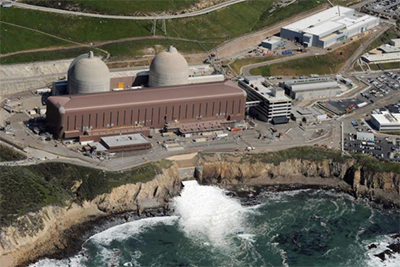
|
“A lie told often enough becomes the truth.” That’s a quote from Vladimir Ilyich Ulyanov, whom the world knows as Lenin. “There are no absolute rules of conduct, either in peace or war. Everything depends on circumstances.” That is from Lev Davidovich Bronstein, who took the pen name Leon Trotsky. “I trust no one, not even myself.” And that is from Osip Dzhugashvili, also known as Stalin.1
Do we see a pattern forming here? The people who would persuade others into believing the utopian dream of socialism or communism—the early Marxists tended to use the two terms interchangeably—with its perfect and unchanging state of human equality, personal selflessness, and tireless contribution, were not above falsifying their evidence and their arguments. They told lies. They had no personal honor. And ultimately, they did not even trust themselves.
I know some people who tell lies—thankfully, few of my acquaintance. Some are intentional deceivers: they know and believe X but still speak and try to convince others of Y. And some of them are delusional or simply unable to navigate the line between truth and fantasy: X, Y, Z … it’s all kind of a blur.
As someone who regularly visits my fantasies in order to write books of fiction, I try really hard to know and understand the truth, to speak the truth wherever I can,2 and distinguish what I would like to believe or wish were true from what I know to be solid fact. Adherence to the truth—and a commitment to checking my positions, questioning my own beliefs, and searching for the truth in any argument—is the basis for my grasp of the world and my hold on reality. If I knowingly tell lies, I am lost.
Adhering to the truth in my thoughts, speech, and action is also part of a code of conduct, which is the basis for a personal sense of honor. Other parts are trying to be fair in my judgments and treatment of others; trying to see the world from another’s viewpoint, or empathy; meeting strangers with a smile, the presumption of good will, and polite courtesies; taking care of myself and my family, so as not to become a burden on society; and—a personal commitment—to move through life and across the earth without leaving an overt trail of filth, waste, and destruction.
Having a personal code of conduct and a sense of honor is part of the Western tradition. It relies on the conscience that good parents and teachers try—or once tried—to instill in young children. It also refers to a military tradition that goes back to the chivalric—a word derived from the French, for armored men on horseback—values that got started in the late Medieval period.
The Dark Ages were a violent time, with rampant murder, rape, pillage, and marauding. Think of the Vikings coming to your coast. Thoughtful people—especially when sitting in the communal hall of an evening, with their bellies full and listening to the troubadours—began to understand that, while a military class and people in armor trained to cleave each other with broadaxes were a necessary part of life, some restrictions must be placed. And the best restriction is from within the person’s own mind and conscience. Thus was born the code of chivalry, of knightly values, of adhering to truth, defending the weak, and fighting fairly. It’s a form of restraint that the warrior placed on himself in adherence to the old songs. It tempered his pride and arrogance at being strong, trained, and able to do real damage if the need arose.
As someone who is six-foot-six, blessed with good health and personal strength, trained in karate and other martial arts in college, and having kept up with that training ever since, I am aware of this temptation to pride and arrogance. For me, personal strength and courage are proof that a person, just to survive, does not have to lie, deceive, cheat, fight unfairly, or take advantage of others who are not as strong. Such a person has sufficient strength and a promise to uphold the social order. And the person with a code of honor is also willing, ultimately, to sacrifice him- or herself for that order and the good of others.
This is part of the Western tradition. Although individuals may be of different ethnic origins, different economic classes, with different advantages and disadvantages, each can aspire to be something more than self by adhering to a code of conduct, through good times and bad, when circumstances might tempt one toward weakness and bullying. This is that thing Trotsky denied in favor of “circumstances.”
To speak the truth bravely; to hold yourself upright in adversity; to stay true to your beliefs despite temptation and opportunity; to fight the good fight, even when unsure of where truth and justice may be found; to be loyal to family, friends, and country … these are the silly old virtues that we used to teach children, boys and girls alike—but more so with boys, because we wanted them to be the defenders of women and children. This used to be the core of moral education, for the making of upright citizens, to become good fathers and mothers in their turn.
Have we lost all that? I don’t know. But I don’t hear the word “honor” spoken much anymore, outside of military academies—and even there the honor code seems to have become something of a joke among cadets. I’m not sure young people today are taught to try to be better than their impulses and their circumstances. I’m not sure self-restraint and sacrifice are taught as virtues—except in the far-off, abstract sense of “from each according to his abilities, to each according to his needs,” which is the ultimate serfdom of the individual serving an impersonal, communal state.
And in the meantime, we’ve all become comfortable with telling lies. So that we don’t trust the statistics, the narratives, or the facts that come out of our government, the mainstream media, or even our “friends” on social media. Sometimes, we don’t even trust ourselves.
1. Of course, there was Adolf Hitler, who echoed Lenin: “If you tell a big enough lie and tell it frequently enough, it will be believed.” And “Make the lie big, make it simple, keep saying it, and eventually they will believe it.”
2. But I’m not immune to the need for “white lies” to preserve the personal sense of dignity of the people around me. Only a boor presses the truth in social situations. And to a dying person I am not about to express my views on the subject of an afterlife.


